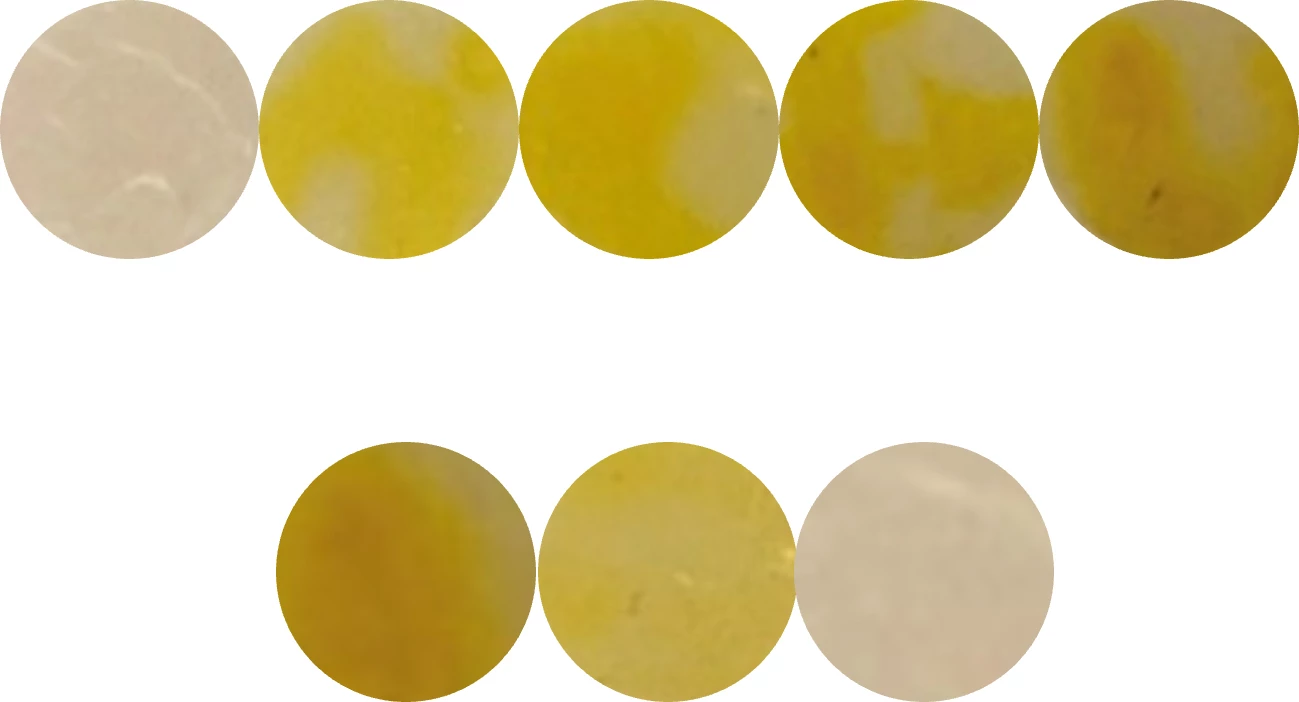Sodium nitrite is often added to cured meats, in order to prevent spoilage while also giving the meats their distinctive color and flavor. It can also cause health problems in large amounts, however, which is why a color-changing film has been created to indicate nitrite levels.
Developed by a team at Spain's University of Burgos, the material is called Polysen, which stands for "polymeric sensor." It's made up of four monomers (individual molecules that react with one another to form a larger polymer chain), along with hydrochloric acid.
When a piece of the film is placed on a meat sample, the monomers and the acid react with any nitrites present in the meat, in what is known as a four-step azo coupling reaction. Once that reaction is complete (within about 15 minutes) the film is removed, then dipped in a sodium hydroxide solution for one minute at room temperature. This causes it to take on a yellow coloration – the higher the nitrite levels in the meat, the deeper the yellow.
In a test of the technology, the scientists placed Polysen discs on 26 pieces of pork. Eighteen of those came straight from the store, while the other eight had sodium nitrite deliberately added to them by the researchers.
Once those discs had undergone the reaction and changed color, a custom smartphone app was used to match each one's shade of yellow to its known corresponding nitrite level. The film was found to produce results similar to those obtained using a traditional, more complex nitrite detection method.

It is now hoped that once developed further, the Polysen tech could take the form of a simple inexpensive kit which consumers could use to test meats in their own homes. The film already meets European safety standards regarding the migration of compounds from the material into the meat it's testing.
A paper on the research, which is being led by Saúl Vallejos and José M. García, was recently published in the journal ACS Applied Materials & Interfaces.
Source: American Chemical Society




